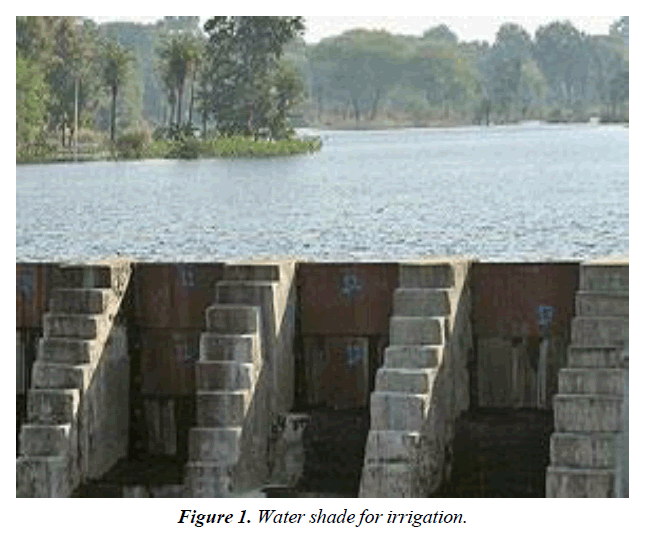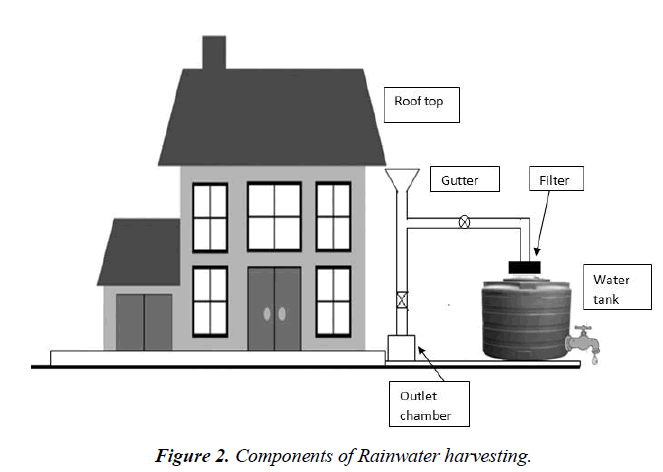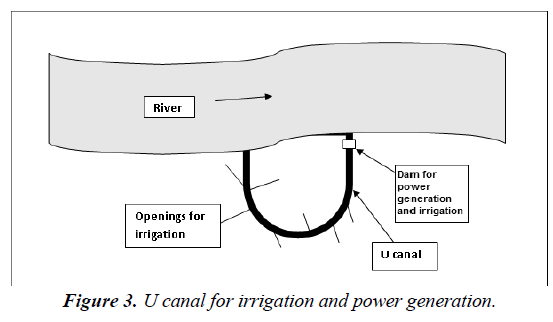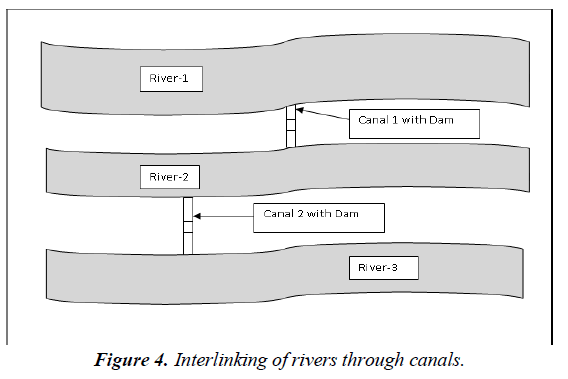Review Article - Journal of Environmental Waste Management and Recycling (2023) Volume 6, Issue 5
Water scenario in India: Challenges and way forward
Madhab Chandra Jena1*, Sarat Kumar Mishra2, Himanshu Sekhar Moharana31BPUT, Rourkela, Odisha, India
2BCET, Balasore, Odisha, India
3HIT, Bhubaneswar, Odisha, India
- *Corresponding Author:
- Madhab Chandra Jena
BPUT, Rourkela, Odisha, India
E-mail: madhab_jena@rediffmail.com
Received: 19-Aug-2023, Manuscript No. AAEWMR-23-110748; Editor assigned: 21-Aug-2023, PreQC No. AAEWMR-23-110748(PQ); Reviewed: 04-Sep-2023, QC No. AAEWMR-23-110748; Revised: 11-Sep-2023, Manuscript No. AAEWMR-23-110748(R); Published: 18-Sep-2023, DOI: 10.35841/aaewmr-6.5.161
Citation: Jena MC, Mishra SK, Moharana HS. Water scenario in India: Challenges and way forward. Environ Waste Management Recycling. 2023;6(5):161
Abstract
One of the major challenges in front of whole world is rapid population growth. To fulfill the needs of the growing population rapid industrialization took place all around. In the other hand environmental pollution is on the rise as a bad consequence of the industrialization and urbanization. Other consequences are crisis of water, food, good quality of air etc. As we know water is the basic need for the human being, without which life is impossible on this earth but today in India water crisis is very prominent mainly in the summer seasons which causes loss of many lives every year. Though during other seasons water is available at a required quantity but the water quality is a matter of concern in many parts of the country. Shortage of water arises mainly due to low underground water level and higher demand of water. India gets plenty of water in the form of rain in monsoon period but almost all water goes to the ocean causing floods in many regions of the country at the other hand in summer the lack of water causes droughts in many regions. So, the water sustainability initiative including rain water harvesting and other initiatives are the solution for this water crisis. In this review article different types of water sustainability initiatives are studied and the some additional systems proposed in details which can be implemented for better water availability and distribution in all parts of the country.
Keywords
Water crisis, water sustainability, Rain water harvesting.
Introduction
It is well known that without water life is impossible on the earth so it is more precious than any other thing in this world like air. Around 97% of total water available on the earth is in sea which cannot be used for domestic purpose or industrial applications only 3% water is fresh water available in ponds, rivers etc. which can be used for different applications. Out of all the [1]. Though this 3% water is sufficient for use of human being for different applications but it is not distributed uniformly all over the world.
Now a day’s people in some parts of the world are facing major challenges for getting the fresh water for their livelihood. Around 2.5 billion people live in these regions [1]. As per the analysis of International Food Policy Research Institute (IFPRI) by 2050 approximately half of global grain production will be at risk due to water crisis. [1].
People in India mainly depend on the rivers, ponds, lakes and ground water for fulfilling the needs of water. River water is mainly used for power generation through dams and subsequent use through canals for irrigation etc. Ground water is used for domestic needs and industrial applications. Ground water is the main source in the most part of the country now a days for domestic use as the river water and pond water pollution level is increasing day by day. Mainly in monsoon the underground is charged with rain water and it is being exploited throughout the year. Around 342 Km3 of rain water is recharged naturally in the ground water which is around 8.56% of total rain fall in India [1]. But due to excessive dependency on ground water the ground water level is falling down day by day in India which is a matter of concern.
Materials and Methods
Different water sustainability initiatives which are already in place is studied and gaps has been identified. Some additional water sustainability initiatives have been proposed which can be implemented for betterment of water scenario in India.
Water sustainability initiatives
To protect the interest of human life on earth the steps should be taken to use water in sustainable way. Different study has been conducted earlier on this for water sustainability initiatives [2]. Different methods which are adopted for water sustainability is as follows. recycling, regeneration, recharging, recollection, redistribution.
Recycling
The water used in a system can be treated and recycled in the system as done in the ETP (effluent Treatment Plant) and different industrial processes. Many plants recover their condensates and recycle in their system. In boiler circuits the steam trap condensate is also collected and recycled in the circuit. Everyone should think and redesign their process in such a way that the water can be recycled and the net consumption should come down to reduce the impact of water foot print on environment.
Regeneration
Water collected from moist air or from air conditioning system is the example of water regeneration. In hot and humid areas, the air contains high degree of moisture. When this air used for air conditioning system this air is dehumidified. In this circuit the water can be collected and reused. Also, in stressed area the water regenerators are used for collecting the water from the atmospheric air for domestic use.
Recharging
Recharging is the method of refilling the source for future use. Raining is the natural process of recharging of all water sources on the earth. Underground recharging by rain water is the main recharging activity which is held naturally. Due to falling down in underground water level the artificial recharging should also be done by different methods which is explained below.
1. Recharging through bore wells
2. Recharging through recharge pits.
3. Recharging through dug wells
4. Through soak ways or recharge Shafts
Recharging through bore wells
In this system the bore well is constructed and connected to the deep ground water layer. The depth of bore well is different in different regions according to the available water table of that particular area. Rain water collected from the roof top is connected to the filtration tank. After filtration the water is recharged through the bore well which is located below the filtration bed or the bore well is constructed at the side of the filtration bed.
Recharging through recharge pits
Recharge pits are [3-5] smaller than the recharging bore wells. Usually the dimensions of these types of pit are of 1 to 2 m width and 2 to 3 m deep. These are normally constructed with any.
Recharging through dug wells
In this method, dug wells are constructed to recharge the upper layer of underground water. Water collected from roof top or surface run off can be charged to dug well after passing through the filter beds.
Recharging through soak way or recharge shafts
It is similar to recharge pits but very small compared to earlier. it is mainly used for top water level recharging. The bore well is perforated to pass the water into the underground through the perforated holes after passing through the filtration beds [3-5].
Recollection and Reuse
The water which is used once in domestic application or in industrial application can be reused as the water used once can be used for gardening etc. Rain water harvesting, rain water collection in the water shade, dams etc. comes under this initiative.
Rain water or flooded water is collected in low land area or in big pits which can be used for irrigation in other season for farming. As shown in the figure 1, the dams required to be constructed with concrete to collect the water in low land area. Gates also can be constructed to control the flow but normally it is not required as the excess water will flow over the dam. The dam should be constructed to such a height that it should collect the required quantity of water and the excess water should not create the back flood (Figure 1).
Rain water harvesting
The rain water harvesting may be defined as the technique of collection and storage of rain water at surface/sub-surface aquifer or overhead before it becomes unusable passing through drains and surface run off. The collected water can be used whenever needed [3,4,6,7].
It has many advantages like Enhancement of ground water through water recharging, saves energy during water lifting as the ground water level increases. Soil erosion will be minimized through water accumulation. It reduces the chance of flood situation. It prevents the drought situation. It improves ground water quality by decreasing salinity due to fresh water charging. In coastal areas sea water cannot ingress in subsurface aquifers. It decreases load on storm water disposal system. Through ground water recharging a huge amount of water is stored without wasting any land. Underground water storing is environment friendly and safe.
Due to various losses i.e. evaporation loss, spillage etc. all rain water cannot be harvested 100%. [3,4]. Rain water harvesting potential can be calculated by using the following formula,
Harvesting quantity = Amount of rainfall X Area of catchment X Runoff coefficient
Coefficient for various surfaces can be obtained from different reliable sources which is determined through The runoff experiments [5].
The calculation of rain water harvesting can be understood with the help of following example:
Consider a building with roof top area (A) of 100 sqm located in Bhubaneswar.
The average annual rainfall (R) in Bhubaneswar is approximately 1000 mm=1meter
If run off coefficient considered as 0.85. Annual rain water harvesting potential from 100 sqm roof, Q = A x R x C = 100 x 1x 0.85 = 85 m3, this is equal to 58000 liters of water
Methods of rain water harvesting
Rain water harvesting can be done manly in two distinctive ways, those are roof top rain water harvesting and surface runoff rain water harvesting [5].
Surface runoff harvesting
In this method rain water falling on the land or surface level is collected through different techniques [3-5].
Roof top rainwater harvesting
In this method the rain water which falls on the roof is passed through the branch of pipe lines and finally collected in a tank. When not required it can be used for underground recharging through a bypass line fitted with valves.
This method is very effective and less expensive [3-5,8]. The proposed design for roof top rain water harvesting system is given in (Figure 2). The area where rain water falls and collected initially is known as catchment of rain water harvesting system. It may be courtyard, roof top, unpaved or cemented open ground. The roof top may be made of sheeting structure or concrete structure.
The rain water collected in the roof top or any other catchment is carried out to the storage tank or bypassed to underground recharging pit through pipelines is known as transportation system. Water from the roof top is passed through the gutter to the pipelines and the mouth area is fitted with wire mesh to prevent the unwanted material going inside the pipe lines which will choke the passage. First flush is the process of bypassing the initial rain water to drain because of impurities. There is always a chance of water to be contaminated or having minute foreign materials after first flush also. So, the filter used for filtering the water before entering into the ground water recharge pipe or water tank. This filter is very important to prevent the contaminant entering inside the water and keeps it clean. The filter element or media needs to be cleaned frequently to avoid clogging.
Methods of roof top rainwater harvesting
In this system the rain water is collected in a water tank for direct use for domestic purposes. The whole system is designed as per the quantity of water requirement. The bypass system is always an integral part of the main system. Sometimes the excess water is bypassed for ground water recharging or if the facility is not available the excess water is by passed to the runoff water drainage system.
Redistribution
Water in one region can be connected to other region through interlinking of rivers and canals. As shown in the figure 3, U canals can be constructed in the rivers in its flowing direction. The canal water can be used for irrigation through the branches. The dams to be constructed fitted with gates for control of water flow and water accumulation. Hydroelectric power generation can be possible by putting small turbines in the dams which will be an additional benefit (Figure 3).
Interlinking of rivers through canals
The rivers of a particular region or whole country can be interconnected by the help of canals as shown in figure 4. The main purpose of this system would be proper distribution of water in different parts of the country which can help to prevent flood situation as well as drought situation. National Water Development Agency is established by the Government of India to study the feasibility and designing of interconnecting the rivers under the Ministry of Water Resources [9-12] Central Government already started few projects of interlinking the rivers but this is not an easy task to implement the project throughout the country (Figure 4).
It will help to promote cultivation in the water stressed area and will accelerate the economic growth of the country. Flood situation will be controlled. The drought situation will be minimized to some extent. This will also help to promote the transportation through water ways which is cheaper than road transport. The trading will be more convenient. Fishing will be done which can be a source of income for the nearby people [2,9,13].
Conclusion
As discussed in the article the various water saving initiatives must be adopted by the individuals, industries and different organizations to mitigate the water crisis in India. After implementing these initiatives additional benefits will be achieved apart from the water availability like it will create livelihood, electricity consumption will come down, water transport will be convenient. The fresh water will be more suitable for domestic use which will reduce the chance of diseases due to consumption of polluted water. If these initiatives are not adopted then sever water crisis will arise in some regions of the country which will create other related problems as discussed above. Though Govt has put enforcement on the industries to adopt rain water harvesting in their premises and it is compulsory but it should be understood by everyone and implemented with true sense. The future scope of the study would be to study the underground water scenario of a particular region and rain water runoff in that particular area to draw a water balance and what percentage of rain water would be harvested in that region for fulfilment of water need of that area.
References
- Shailesh T. Earth’s water distribution and indian scenario. 2011.
- United Nations Children’s Fund [UNICEF], WHO, JMP progress on household drinking water, Sanitation and hygiene. 2019.
- National Green Tribunal. Central ground water authority. 2018.
- CSE. Launching a new site on rainwater harvesting and lake revival. 2021.
- Indian rivers interlinking project. 2005.
- Shankar SD, Eswar DV, Beebee SKS. A study on watershed management in surampalem village. 2019.
- Rainwater Harvesting. Rainwater harvesting system at centre for science and environment. 1999.
- National Bureau of Statistics, United nations children’s fund multiple indicator cluster survey (Mics) 2016/2017.
- Jal Swaraj. Components of a rainwater harvesting system. 2021.
- Koudstaal R, Rijsberman FR, Savenije H. Water and sustainable development. Nat Resour Forum. 1992;16(4):277-90.
- Grey D, Sadoff CW. Water for growth and development: Thematic documents of the IV world water forum. National Water Comission. 2006.
- Alimentarius C. Food and agriculture organization. 2003.
- Tutorial on basic principles of integrated water resources management. 2018.
Indexed at, Google Scholar, Cross Ref



